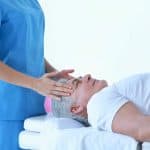Aside from those solely seeking relaxation, a significant percentage of massage therapy clients hope for pain relief. A 2005 USA Today/ABC News/Stanford University Medical Center poll indicated that more than half of Americans suffer from chronic or recurrent pain. To deal with many kinds of chronic pain, physicians commonly prescribe the non-steroidal anti-inflammatory drug (NSAID) Celebrex. Since most massage therapists are more than likely to have at least one client on Celebrex, it is important to understand how this drug works and its potential impact on massage therapy.
NSAIDS
Because they relieve pain, inflammation and stiffness, NSAIDs are widely used to help treat arthritis by blocking prostaglandins. Produced by the body’s cells, prostaglandins have several important functions. In addition to promoting inflammation, pain and fever, prostaglandins support the function of platelets required for blood clotting and they protect the stomach lining from the damaging effects of acid.
Prostaglandins are produced by the enzyme cyclooxygenase (Cox). While there are two Cox enzymes – Cox-1 and Cox-2 – only Cox-1 produces prostaglandins that supports platelets and protects the stomach. Since traditional NSAIDs block both Cox enzymes, they reduce the prostaglandins that protect the stomach and support blood platelets. Therefore, in addition to reducing ongoing inflammation, pain and fever, traditional NSAIDs have been known to cause stomach ulcers and encourage bleeding.
Cox-2 Inhibitors
With over one million prescriptions filled each month, Celebrex is a popular Cox-2 inhibitor. Cox-2 inhibitors are a distinct type of NSAID, which selectively inhibits Cox-2, while sparing Cox-1 to reduce gastrointestinal toxicity. Despite the apparent advantage of Cox-2 NSAIDs, they still have their share of risks.
At the end of 2004, the U.S. Food and Drug Administration issued a public health advisory concerning use of non-steroidal anti-inflammatory drug products (NSAIDS) including those known as Cox-2 selective agents. All prescription NSAIDs, including Celebrex, may be associated with an increased risk of serious cardiovascular events (heart attack and stroke) especially when they are used for long periods of time or in very high-risk settings (immediately after heart surgery). While several Cox-2 NSAIDS were removed from the market following this advisory, Celebrex remained for sale because its benefits outweighed the purported risk.
Concerns For the Bodyworker
Because clients on Celebrex are likely to have decreased pain and inflammation levels, extra caution in the depth and pressure of any massage stroke is required. The main side effects that are likely to affect a massage session are:
- Drowsiness
- Dizziness
In Pharmacology for Massage Therapy, Jean M. Wible advises countering these effects by using more rapid and stimulating strokes at the end of a session for clients taking Celebrex. In addition, Wible suggests special care be taken with elderly patients on Celebrex because they tend to have more problems with dizziness. During bodywork, older individuals are more prone to dizziness because of a slower nervous system response during positional changes.
If a client taking Celebrex mentions any of these more serious side effects, they should be referred to a physician:
- Abdominal pain
- Bleeding
- Anorexia
- Diarrhea
- Nausea
- Ulcers
- Jaundice
- Confusion
- Tinnitus or Vertigo
- Depression
- Bladder infection
- Blood in the urine
When prescribed judiciously, Celebrex helps many people reduce chronic pain. As a healthcare practitioner who helps people ease pain, you are likely to encounter clients taking this Cox-2 inhibitor. Being familiar with how it works, what the common and serious side effects are, and how to adjust your technique for this medication will directly benefit your clients who take Celebrex.
Recommended Study:
Advanced Anatomy and Physiology
References:
Arthritis Therapy: You Decide, Consumer Reports on Health, July 2007.
http://arthritis.about.com, What are COX-2 Inhibitors?, Carol & Richard Eustice, About.com, 2008.
Wible, Jean M., Pharmacology for Massage Therapy, Lippincott, William & Wilkins, 2004.
www.cdc.gov, Arthritis Related Statistics, United States Department of Health and Human Services, 2008.
www.celebrex.com, About Celebrex, Pfizer, Inc., 2008.
www.fda.gov, Public Health Advisory Non-steroidal Anti-Inflammatory Drug Products, US Food and Drug Administration, 2008.
www.foxnews.com, Pain Poll: Many Americans Suffer Chronic Pain, Fox News Network LLC, May 2005.
www.medicinenet.com, Celecoxib-oral, MedicineNet Inc., 2008.
www.medicinenet.com, Nonsteroidal Antiinflammatory Drugs (NSAIDS), Omudhome Ogbru, Pharm. MedicineNet Inc., 2008.
www.usatoday.com, Chronic Pain: The Enemy Within, Steve Sternberg, USA Today, May 2005.















